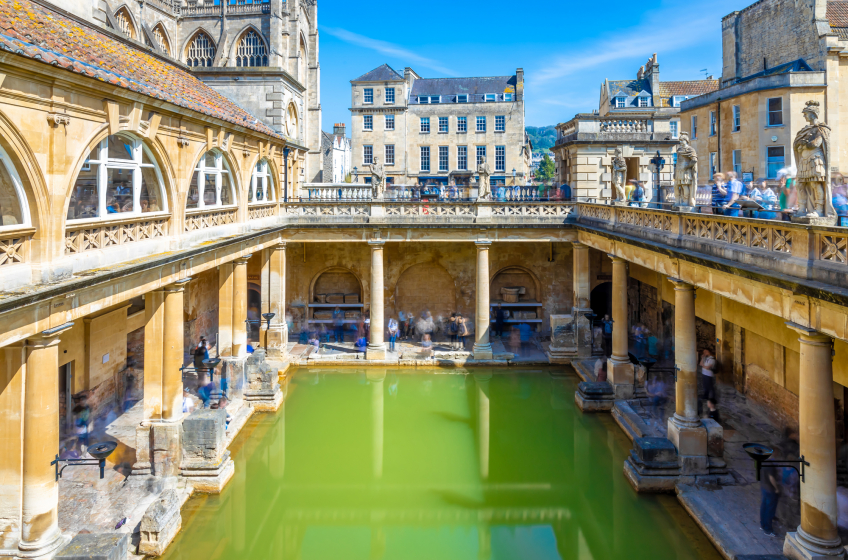An Introduction to Bath
a visitor's overview of this historic UNESCO world heritage city in South West England
Welcome to Bath, a city that has been attracting visitors for over 2,000 years. Located in the picturesque southwest of England, Bath is known for its stunning Georgian architecture, natural hot springs, and rich cultural heritage.
Bath's history dates back to the Roman era, when the city was known as Aquae Sulis. The Romans were drawn to the area for its natural hot springs, which were believed to have healing properties. They built a grand bathing complex, which still stands today and is one of the city's most popular tourist attractions.
After the Romans left Britain, Bath fell into decline for several centuries. However, in the 18th century, the city experienced a revival thanks to the Georgian era, a period of great artistic and cultural achievement in England. Many of Bath's most iconic buildings, such as the Royal Crescent and The Circus, were built during this time, and the city became a popular destination for wealthy visitors looking to take the waters and socialize.
Today, Bath is a vibrant and cosmopolitan city that attracts visitors from all over the world. It is a UNESCO World Heritage site, and its stunning architecture, rich cultural heritage, and natural beauty make it a must-see destination for anyone visiting England.
One of the main draws of Bath is its stunning Georgian architecture. The city is home to some of the finest examples of Georgian architecture in England, and visitors can take a stroll through its elegant streets and marvel at the grand buildings that line them. The Royal Crescent is perhaps the most famous of these, with its sweeping crescent-shaped facade and thirty terraced houses. The Circus is another iconic example of Georgian architecture, with its circular layout and ornate facades featuring pilasters, columns, and friezes.
In addition to its stunning architecture, Bath is also known for its natural hot springs. The Roman Baths are one of the city's most popular tourist attractions, and visitors can explore the ancient baths and learn about their history and significance. The Thermae Bath Spa is another popular destination, offering a modern take on the traditional bathing experience with its rooftop pool and spa facilities.
Bath is also home to a number of impressive museums and galleries, showcasing the city's rich cultural heritage. The Victoria Art Gallery is a must-visit for art lovers, with its collection of British oil paintings and decorative arts. The Fashion Museum is another popular destination, with its collection of historic and contemporary fashion and textiles.
For history buffs, the Bath Abbey is a must-visit. This stunning Gothic church dates back to the 7th century and has undergone many changes over the centuries. Visitors can take a tour of the abbey and learn about its history and significance, as well as enjoy stunning views of the city from its tower.
Foodies will also find plenty to enjoy in Bath, with its diverse range of restaurants and cafes serving everything from traditional British fare to international cuisine. The city is known for its afternoon tea, and visitors can indulge in this quintessential British tradition at one of Bath's many tea rooms.
Finally, Bath is a great base from which to explore the surrounding area. The Cotswolds, a designated Area of Outstanding Natural Beauty, is just a short drive away and is home to charming villages and rolling countryside. The city of Bristol, with its vibrant music scene and street art, is also easily accessible from Bath.
In conclusion, Bath is a city that offers something for everyone. Its stunning Georgian architecture, natural hot springs, rich cultural heritage, and vibrant food and drink scene make it a must-visit destination for anyone traveling to England. So whether you're a history buff, an art lover, a foodie, or simply looking to relax and unwind, Bath is the perfect destination for your next trip.

